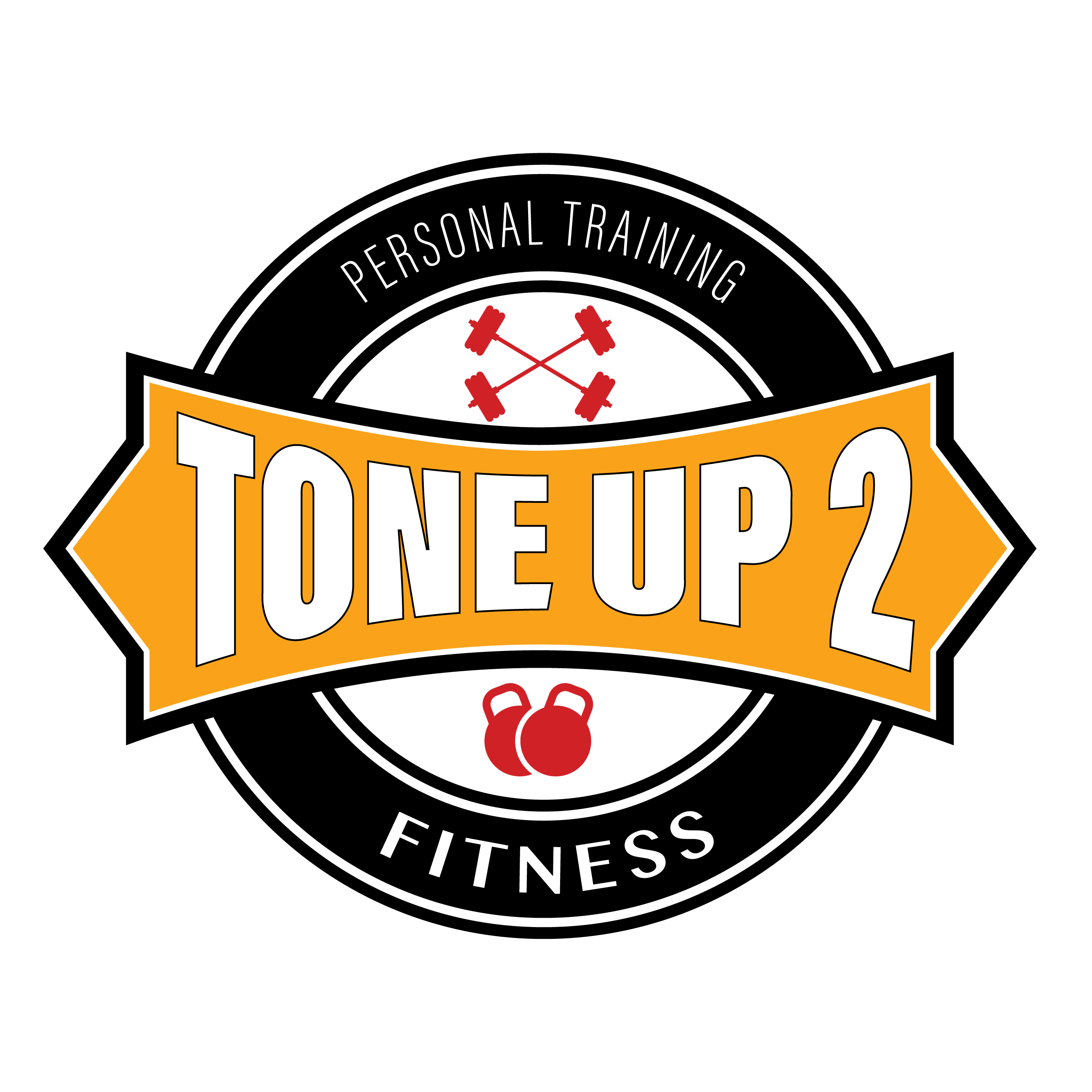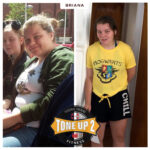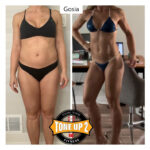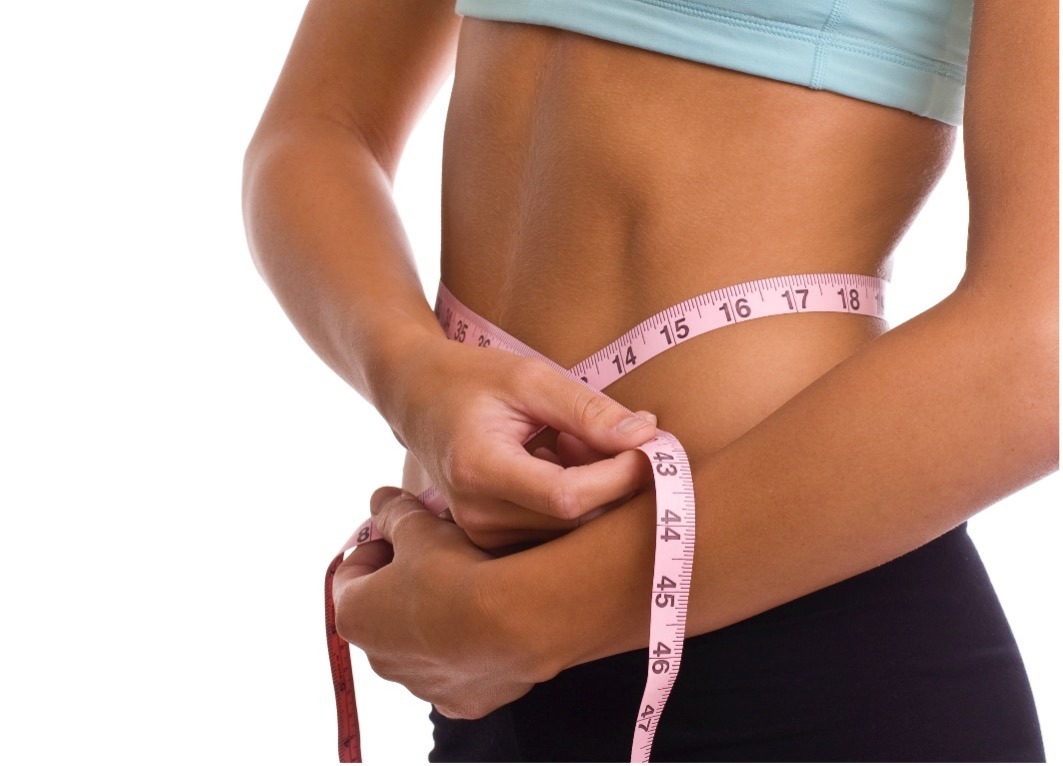
How many times have you tried losing weight and have hit the wall? You’ve tried making the “right” changes but still haven’t seen any results? Does it feel that losing weight and reaching your dream body is slowly becoming a fantasy? A distant dream that you will never reach in this lifetime. Well don’t lose heart! It takes time to figure out what those right changes are for you as an individual.
While there is no magic formula nor any magic pills for weight loss this does not mean all hope is lost. In fact, there is an existing “formula” that provides some key elements to fat loss. Ever heard of the Pyramid of Fat Loss? Notice FAT loss, not weight loss because those are two different things. As fat loss suggests, you are losing fat which is what will help you achieve that more toned look. This will give you the body composition changes most people desire to attain. On the other hand, weight loss is too general because that could just mean water loss and therefore no true body composition changes.
Now that you understand why fat loss is more likely than not the change you are hoping to achieve, let’s dive right into the first and most important component of the Pyramid of Fat Loss. And that is being in a caloric deficit. Whether your goal is to lose fat or gain muscle, it is important to understand that calories are key in the process. Being in a caloric deficit will be crucial for fat loss. This means that the number of calories your body is burning needs to be greater than the calories being consumed.
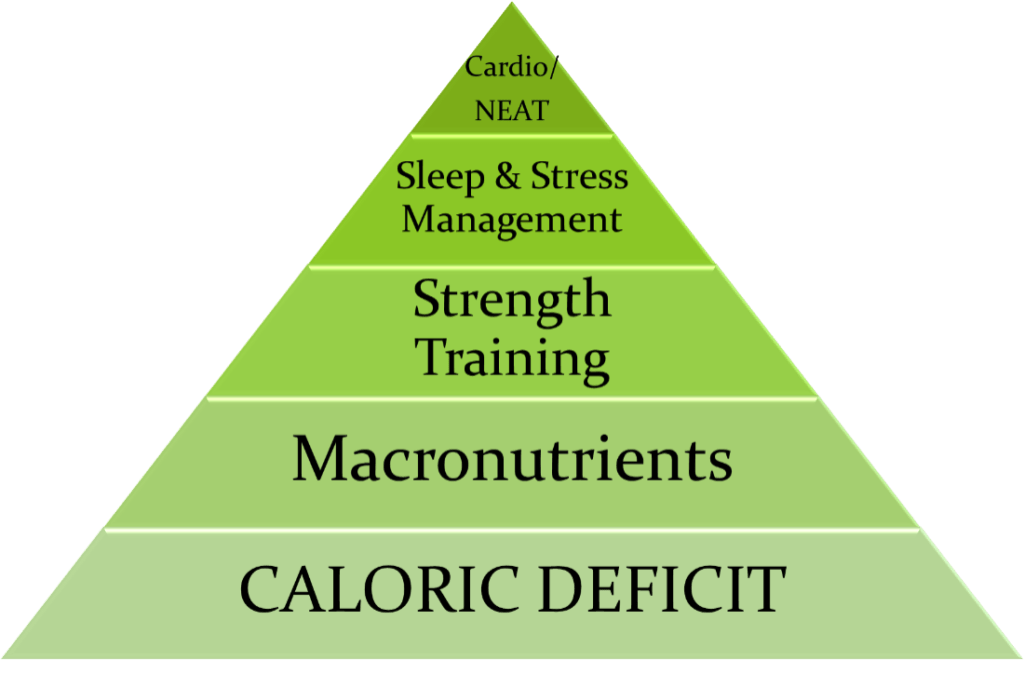
For simplicity’s sake, let’s say you are trying to lose 1 pound in a week. 1 pound of fat is equivalent to 3,500 calories which means that in order to lose 1 pound per week, you need to be in a caloric deficit of 500 calories per day (3500 calories/7 days= 500 calories). How can you create a caloric deficit? The great news is there are a few routes to take. You can manipulate your total daily energy expenditure (TDEE) by making changes to:
- Diet- decreasing the number of calories consumed on a daily basis and/or adjusting your macros)
- Exercise regimen- increasing physical activity
- Combination of both! This will help you see progress at a faster rate
Below are a few tips on how you can start incorporating some of these changes into your daily routine:
Gain awareness of your habits.
This is probably the most important step towards any sort of change you are trying to make. Wherever you are at right now in your fitness journey is a direct result of the daily actions you have taken as those are the behaviors that have become habits. Without understanding your current habits, you are more likely to keep repeating those same behaviors because that is just how the brain is wired. So ask yourself- which habits are no longer serving you and which ones could lead you toward the results you want to see? What are some habits that you can create to build a healthy and sustainable lifestyle? Big things start small so begin by introducing new habits into your daily routine one at a time. Habits are built over time by practicing them daily. Once you master those new habits, then you can add more. Whichever habits you choose to put into practice make sure they are realistic. This will set you up for success. Remember, you want these changes to be sustainable so that you can stay on course in the long run.
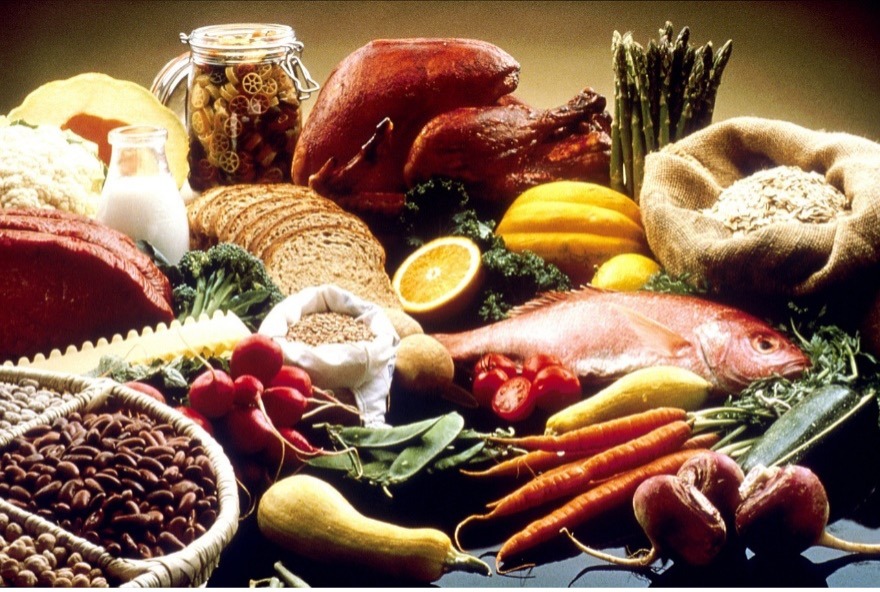
Consume low-calorie dense foods.
Low-calorie dense foods are low in calories relative to their total weight or volume making you feel fuller quicker than a high-calorie dense food. Studies have shown that individuals who consume more high- calorie-dense foods are more inclined to run a higher risk of gaining weight and becoming obese while those who consume low-calorie dense foods tended to have healthier body weight. Not to mention, those individuals ate fewer calories per day. This means incorporating more whole foods into your diet. And no, that does not mean only fruits and vegetables (although a sufficient amount should come from these foods groups). Whole foods also include whole grains, nuts, legumes, and beans. Not only will you feel more satiated on fewer calories, but it provides more nourishment. Reduce the canned, packaged, GMO foods which not only tend to contain more added fat, sugar, and salt but are also loaded with toxic chemicals that are associated with health problems such as heart disease, type 2 diabetes and cancer. Swap these with whole foods and your body will be running on cleaner energy.
Add more lean protein to meals.

In doing so you will feel more satiated because lean protein tends to have a low-calorie density makeup. Additionally, protein is thermogenic meaning that your body will burn more calories through protein consumption than with carbs or fats. Here are some protein options to consider: chicken breast, turkey, white fish, egg whites, non-fat Greek yogurt, and non-fat cottage cheese. This topic will be covered in greater detail in the next post!
Drink more water.

It’s easy to confuse thirst with hunger so next time you are hungry grab a glass of water. Adults are made up of nearly 60% water so regardless of what your fitness goals are, you should make sure you are drinking enough water. The general rule of thumb is to drink at least 8 cups of water a day. But the amount of water you need really depends on factors such as your height and weight. To determine how much water you should be drinking, take your weight (in pounds) and multiply it by 2/3. Divide this result by 8 to get the number of cups you should be drinking per day.
Incorporate more physical activity into your daily routine.
Go on a walk or run. Grab some weights at the gym or at home. No weights? That’s ok. There are many bodyweight movements you can do. Just get up and move! The United States Department of Health and Human Services recommends a minimum of 150 minutes (2 hours and 30 minutes) to 300 minutes (5 hours) of moderate-intensity per week or 75 minutes to 150 minutes of vigorous-intensity aerobic physical activity per week for adults. It is also recommended for adults to engage in muscle-strength training activities that involve all major muscles groups on 2 or more days of the week.

Incorporate more physical activity into your daily routine.
Go on a walk or run. Grab some weights at the gym or at home. No weights? That’s ok. There are many bodyweight movements you can do. Just get up and move! The United States Department of Health and Human Services recommends a minimum of 150 minutes (2 hours and 30 minutes) to 300 minutes (5 hours) of moderate-intensity per week or 75 minutes to 150 minutes of vigorous-intensity aerobic physical activity per week for adults. It is also recommended for adults to engage in muscle-strength training activities that involve all major muscles groups on 2 or more days of the week.
Stay Accountable

By now you might have several ideas on what changes you would like to make. Or you might be thinking- “I’ve already tried making these changes in the past and I haven’t been able to stick with them.” After all the execution of putting those new habits into practice is the hardest part when it comes to fat loss. Therefore, staying accountable will be very key to your success.
First and foremost, keep in mind that these new habits are part of your larger goal to lose fat, which could stem from a purely physical desire or maybe you are trying to manage or prevent a chronic illness such as obesity, diabetes, or high blood pressure. Whatever the case is- understand the main reason you want to achieve your goals and use this as the fuel that will carry you day by day closer to reaching those goals.
Back to accountability- how can you make this happen? You can start by simply writing down your main goal and the habit changes you plan on making to achieve your goal. It will also be helpful to find a way to track these habit changes in order to keep a close eye on your progress. This could mean a combination of multiple methods such as tracking food in a food diary, tracking workouts, or weighing yourself on a scale. It all depends on the goals you set and your preference. Again, whatever you decide to go with, make sure it will be something you know you can be consistent with.
Don’t forget to schedule regular check-ins. Make the time to review what you have tracked to see how you are doing. This is the perfect time to identify what has been working for you and what has not. For anything that has not been working- are there any changes you can make? For ex. If you find yourself snacking a lot or eating less healthy foods out of pure convenience, could it help to meal prep?
It might also help to share your goals with others whether it’s your family or friends. Having others know what your goals are and the steps you are going to take to reach your ultimate goal could make it more real. Finding the right support can have a positive impact. If you know someone with similar goals, ask them to be your accountability partner or better yet become accountability buddies for each other. It’s a win-win!

As with any major changes, it takes time. You will not see a transformation overnight. It will take patience, dedication and consistency. Then, before you know it, you will most certainly reap the rewards!
Stay tuned for the next post where I will cover the remainder of the key elements to fat loss: macronutrients, strength training, sleep & stress management, and finally cardio/NEAT (Non-exercise activity thermogenesis).
